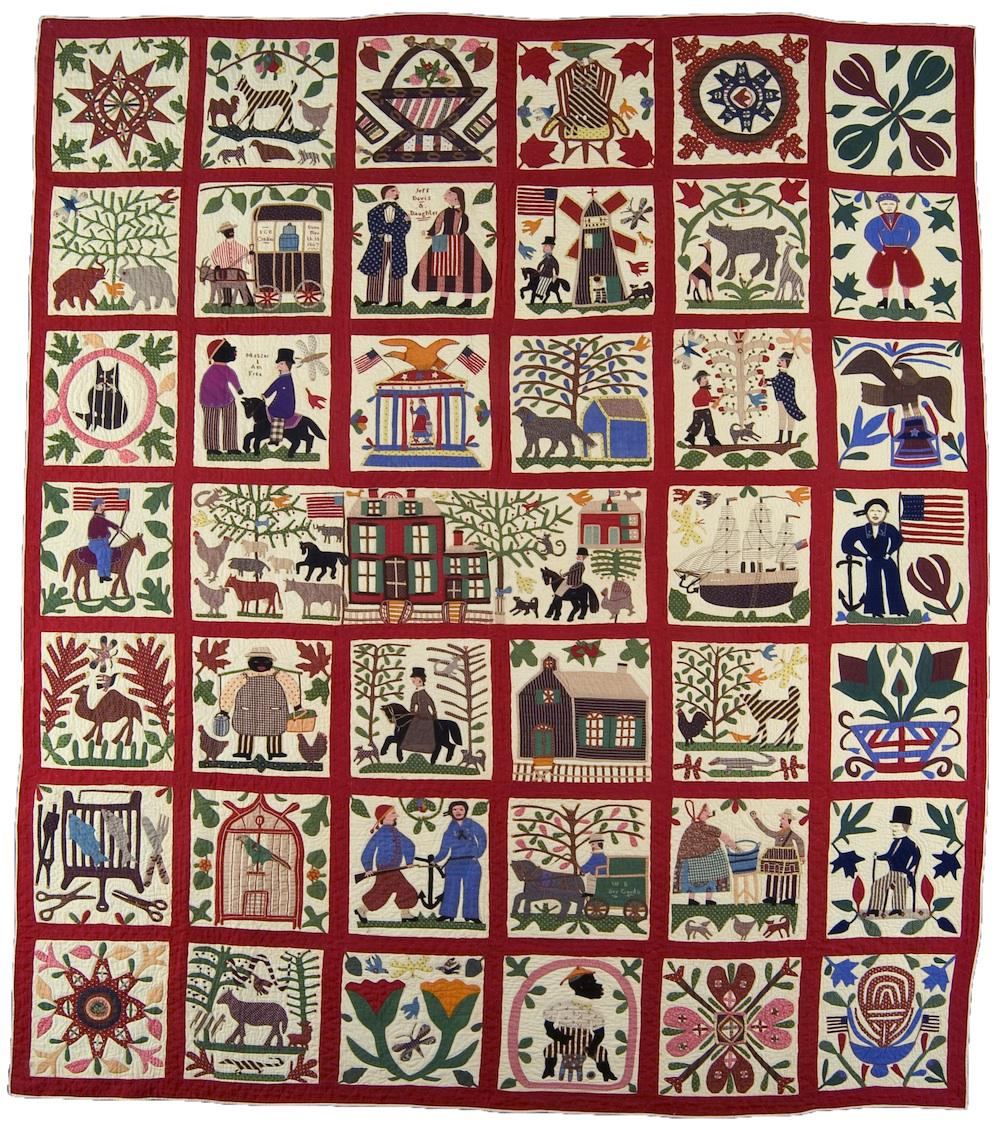The Vault is Slate’s history blog. Like us on Facebook, follow us on Twitter @slatevault, and find us on Tumblr. Find out more about what this space is all about here.
Lucinda Ward Honstain, resident of Williamsburg, Brooklyn, pieced and sewed this quilt in 1867. It depicts her view of life before, during, and right after the Civil War. The quilt is familiarly known as the “Reconciliation Quilt,” and it fetched the record highest price for a quilt at auction ($264,000, at Sotheby’s in 1991).
In her design, Honstain juxtaposed personal and political events. A center panel, which is a triple-wide block, shows her home in Williamsburg. Her family was in the dry goods business; curator Robert Shaw suggests that the gentleman in the dry-goods wagon on the second row from the bottom may have been her brother. Honstain mixed scenes of Zouaves in their colorful uniforms and self-emancipating enslaved people with more neutral representations of a bird in a cage, flowers, and an ark’s worth of animals. (My favorite has to be the walrus.)
Historian David Blight argues that the strong American desire for cultural reunion in the years after the Civil War led to difficult discussions about slavery, race, and citizenship being swept under the carpet. Does this quilt—with its hopeful title and its panel showing Jefferson Davis on his way out of jail—participate in that act of forgetting?
The Reconciliation Quilt will be on view at the New-York Historical Society, as part of the exhibition “Homefront & Battlefield: Quilts & Context in the Civil War,” from April 4 through August 24 of this year.

International Quilt Study Center & Museum, University of Nebraska-Lincoln